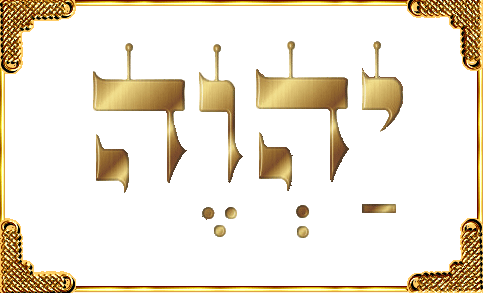


 88
PROTO-TRINITARIANISM
88
PROTO-TRINITARIANISM

The Minimal Godhead Doctrine of NCAY

The following article is NCAY's respose to the request made by questioners to define its stance relative to the Trinity doctrine and is our official reply to the contrary articles on this subject which appeared in the previous issue of the New Covenant Witness (NCW 43:3-44). Constraints to publish the Olive Branch prevent us at this time from giving a more detailed response to the articles by Hunt, Lerner and Frydland but such will certainly follow later.
The word ‘Trinity’ is not found in the Bible, and, though used by Tertullian in the last decade of the 2nd century, it did not find a place formally in the theology of the Western Church until the 4th century. It is, however, its proponents claim, the distinctive and all-comprehensive doctrine of the Christian faith and ‘gathers up into the seam of a single grand generalisation with respect to the being and activity of God all the major aspects of Christian truth’ (Lowry).
The theology of the Western Church seeks to define the substance of Elohim (God) by stating that Elohim (God) is one in His essential being, but that the divine essense exists in three modes or forms, each constituting a Person, yet in such a way that the divine essence is wholly in each Person. The teaching of Christ, they maintain, bears testimony to the true personality of each of the distinctions within the Godhead and also sheds light on the relations existing between the three Persons. It was left to theology to formulate from this a doctrine of the Trinity.
The necessity to formulate the doctrine was thrust upon the Western Church by forces from without, and it was, in particular, its faith in the deity of the Messiah, and the necessity to defend it, that first compelled the Western Church to face the duty of formulating a full doctrine of the Trinity for its rule of faith. Irenaeus and Origen share with Tertullian the responsibility for the formulation of the doctrine which is still, in the main, that of the ‘universal Church’.
Under the leadership of Athanasius the doctrine was proclaimed as the faith of the Church at the Council of Nicaea (AD 325), and at the hands of Augustine a century later it received a formulation, enshrined in the so-called Athanasian Creed, that is accepted by Trinitarian churches (Roman and Protestant) to this day. After it had received a further elucidation at the hands of John Calvin it passed into the body of the Reformed (Protestant) faith. The Eastern Orthodox Church believes in a slightly modified formulation (which led to its schism from the Western Church) but it is basically ‘Trinitarian’.
The New Covenant Assemblies of Yahweh reject the Nicaean and Athanasian Creeds not because they are unreasonable extrapolations of the biblical witness but because they go far beyond anything revealed in the Bible and therefore lack apostolic authority -- and also because Trinitarian Christians, by mere human fiat, have made its acceptance a qualification for orthodoxy and therefore salvation which the Bible nowhere demands. It is, in short, a dogma.
The New Testament ‘creeds’ (if they may be called such -- there is no such word in the Bible) range in scope from the simple “Yah'shua (Jesus) is Master (Lord)” to ‘proto-Trinitarian’ formulations, as in the apostolic benediction of 2 Corinthians 13:14 and such references as Matthew 28:19, 1 Corinthians 12:4ff., 2 Corinthians 1:21ff. and 1 Peter 1:2; but excepting the interpolated 1 John 5:7ff.. There are also New Testament ‘Binitarian’ creeds which associate the Father and the Son, as in 1 Corinthians 8:6 (which may be the Christianised version of the Israelite credo known as the Shema, based on Deuteronomy 6:4ff.), 1 Timothy 2:5ff.; 6:13ff. and 2 Timothy 4:1. The main type of creed, however, is the Christological formula with such detailed summaries as in 1 Corinthians 15:3ff., Romans 1:3; 8:34, Philippians 2:5-11, 2 Timothy 2:8, 1 Timothy 3:16 and 1 Peter 3:18ff..
NCAY accepts, however, the Apostles’ Creed which, though extra-biblical, is completely substantiatable from the Scriptures. This is as far as Messianic Evangelicals will go as far as any credal formulation or test of faith is concerned. It leaves the matter of the full revelation of the composition and nature of the Elohimhead (Godhead) to some future time when the fullness has come and refuses to become embroiled in any debate on a subject which has caused unspeakable misery and suffering over the centuries to differing bodies of warring Christian factions who have interpreted the limited data as best they could.
NCAY, for want of a better label, might call itself “proto-Trinitarian”, a position which the Olive Branch takes, though with hints of other possible positions, including traditional Trinitarianism. What Messianic Evangelicals are not, however, are Arian (Yah'shua/Jesus is a ‘lesser god’ -- Jehovah’s Witness), Tri-Theistic (‘three gods’ -- modern Mormon), Dyanmic Modalistic/Monarchistic (‘one God, one Person, three modes’ -- United Pentecostal/early Mormon), or Unitarian (Yah'shua/Jesus is only a man -- Muslim, some Messianics). The fundamental tenet of New Covenant theology is the deity of Messiah -- “Yah'shua (Jesus) is Master (Lord)” (Rom.10:9; 1 Cor.12:3).
For a fuller exposition of of this doctrine, see Prototrinitarianism and Yah'shua the Messiah and His Place in the Godhead.


This page was created on 12 April 1998
Last updated on 19 January 2017
Copyright © 1987-2017 NCAY - All Rights Reserved




